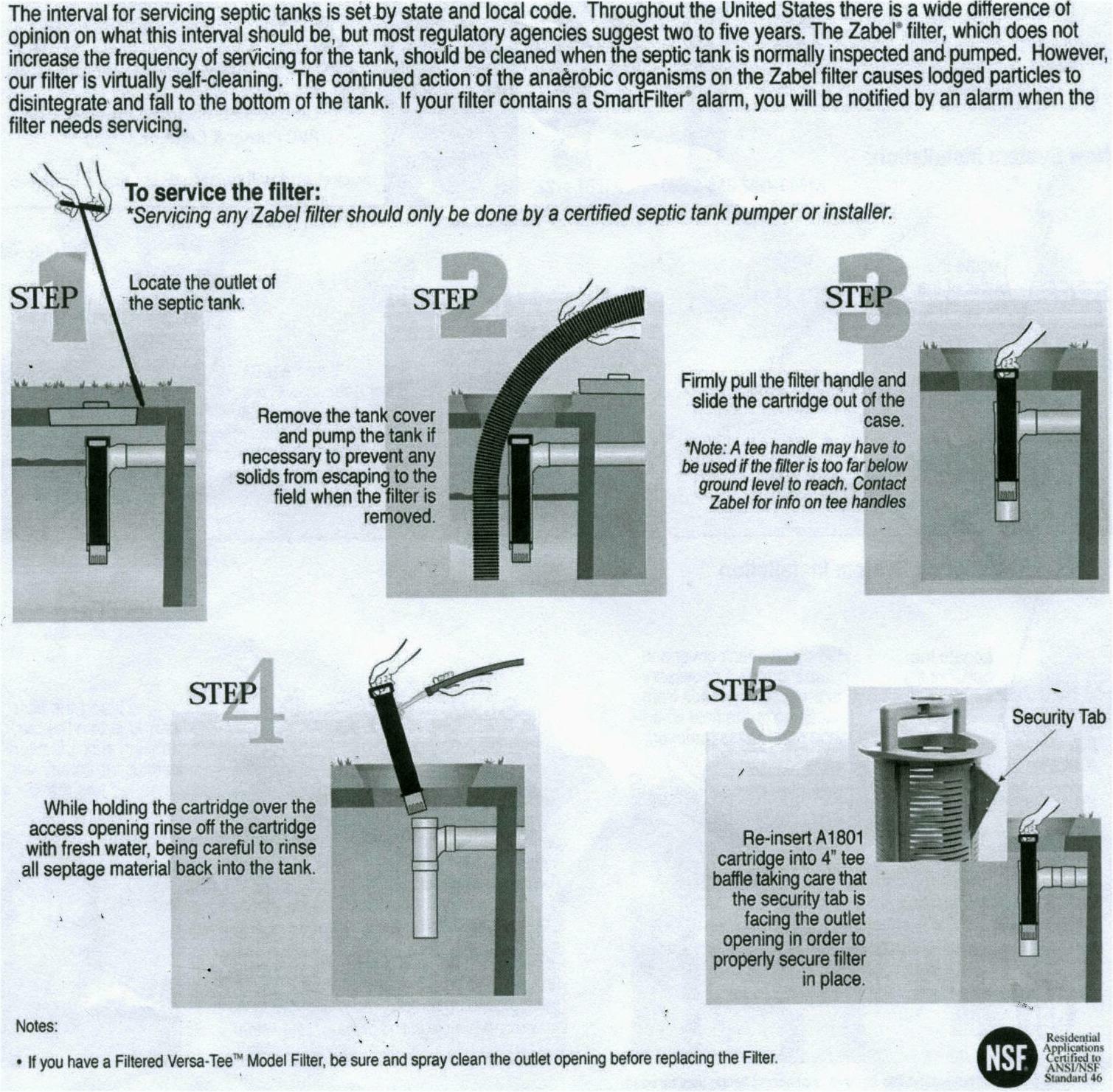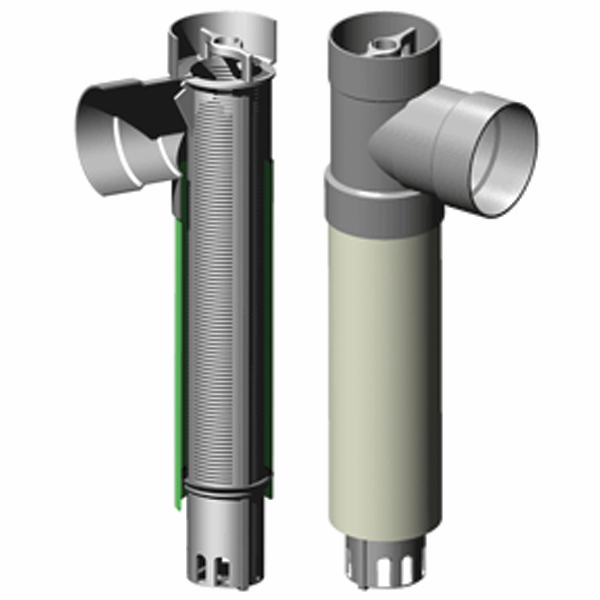Lifetime self-cleaning greywater filter never needs replaced
Every greywater system MUST have a settling basin with filter to prevent particulates from entering the leach field. Particulates combine over the years to form a black sludge layer in the bottom of your leach pit or field, called 'bio-mat'. Bio-mat clogs the soil, preventing percolation and eventually causing total failure. Choose a heavy-duty tank that is rated for 'dry burial', meaning it can be buried without water inside and not risk collapsing from weight of soil atop and around. Tanks as short as 42 inch tall are adequate for a greywater system. Generally, you need at least 24 inches from the base of the outlet pipe to the bottom of the settling tank. Installing filters too close to the bottom of the tank may not provide enough settling area to prevent solids from exiting the tank, especially under turbid conditions. Proper inlet plumbing, as detailed below, is critical to proper filter function.
Our time-tested NSF/ANSI certified standard #46 graywater filter assembly has a universal hub for use with either SDR35 thin-wall or Sch40 thick wall 4 inch diameter pipe. This lifetime service filter is self-cleaning in normal use, with a natural sloughing action to prevent bio-mat buildup. Features 80 lineal feet of filtration area for up to 800 gallons per day treatment volume. Built-in gas deflector on the bottom provides secondary 1/2 inch filtration to prevent larger solids from entering inside. A series of 1/16 inch horizontal filtration slots, rather than a mesh screen, provides much less surface area for solids like laundry lint to attach themselves. Patented flow pattern reduces trapping of solids inside by allowing sediment to slough-off and fall back into the tank for further digestion. Filter features a locking tab to prevent ‘floating’. Solids are not allowed to pass-by filter when tank occasionally surges. This care-free graywater filter design never needs replacing. Please email service@thenaturalhome.com with any questions or concerns.
$107 each and only available with Infiltrator septic tank
includes free 5" diameter hole saw kit for cutting tank inlet and outlet
We no longer ship greywater system parts outside of Colorado. For in-state clients, this dependable kit comes complete with filter, housing tee that fits Sch40 or SDR35 four inch pipe, and a handle extension. You never have to replace this lifetime service septic filter. Best to hose it off once a year to be sure, but generally this septic tank filter will automatically shed debris for self-cleaning operation.
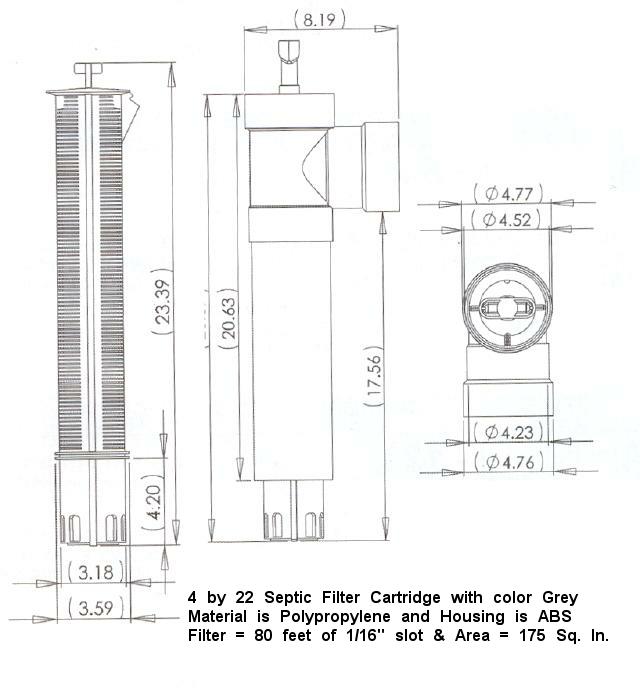
Always limit the amount of debris and sediment going down your drains by installing strainer baskets in every sink, tub and shower and only use liquid soaps. When your utility room sink is installed alongside the washing machine, you can attach a five gallon paint strainer bag to the washing machine effluent hose with a clamp, as pictured at right. Laundry lint (synthetic fibers, especially), hair, and sediment (dirt) does not decompose readily, eventually clogging any leach field by creating an impenetrable 'bio-mat', unless filtered out with a settling tank. Settling tanks remove and contain debris and fats, ensuring a much longer-lasting graywater irrigation or disposal system.
do-it-yourself greywater design tips and rules-of-thumb for installation |
Always check with officials before installing inlet fittings. With smaller settling tanks, like our greywater kit, local code likely won't require two 22.5 bends prior to sanitary tee to bring top of fitting closer to water level. Rules vary from county-to-county, and from inspector-to-inspector, but bottom of inlet pipe is normally up to 12 inches below tank water level. Liquid surface is measured at outlet pipe hole, which is lower than inlet. Inlet hole is generally at least one inch higher than outlet hole to prevent sewage back-up. On larger graywater settling tanks and septic system tanks, that difference is usually two inches. And then the two 22.5 bends are installed as pictured to prevent sewage backup.
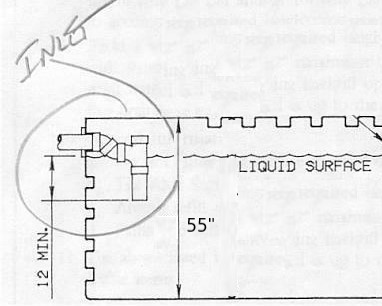
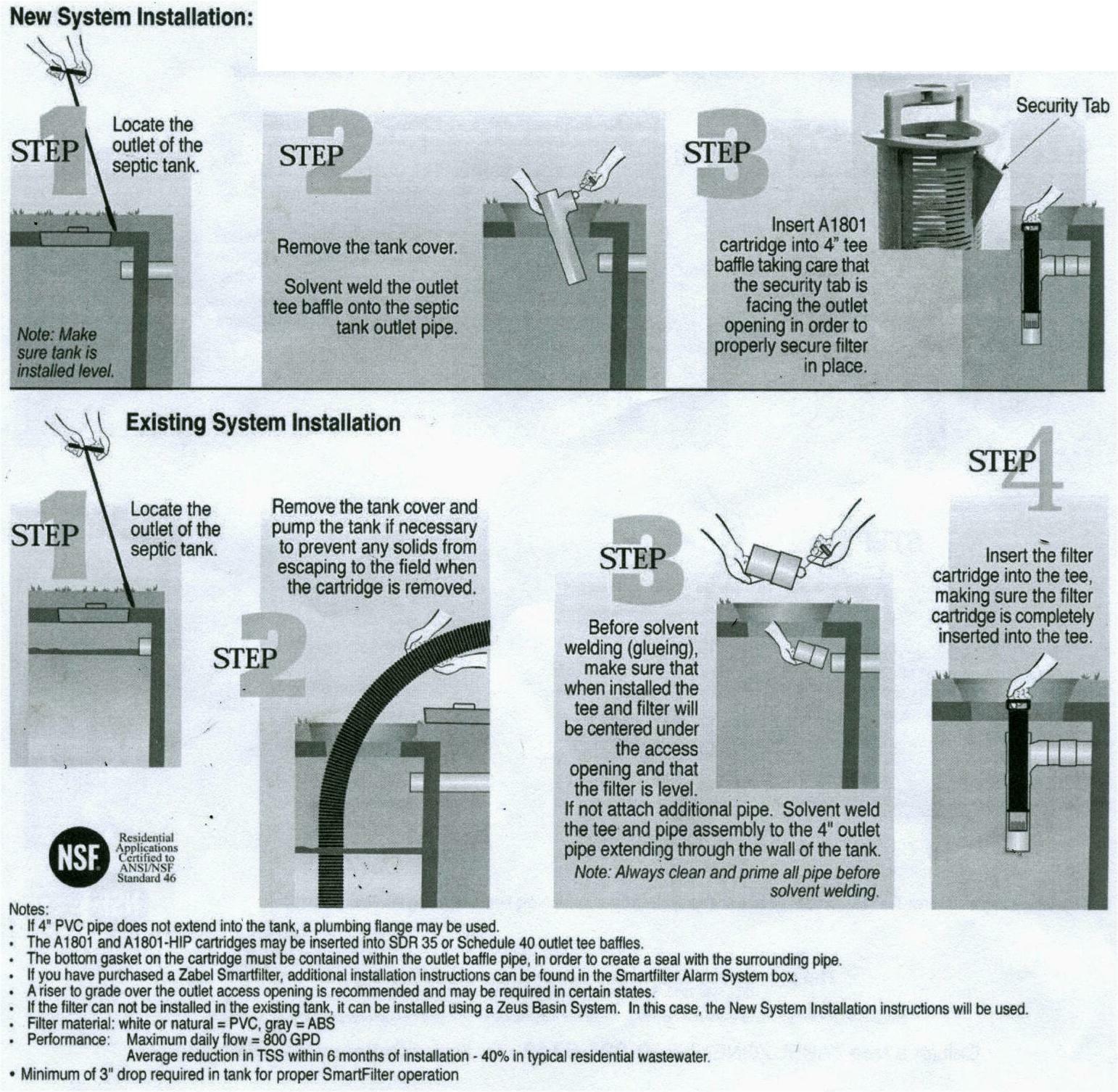
Filter housing is black ABS plastic so use 'multi-plastic' cement with white/green PVC pipe. Always prime all pipe joints first, before applying solvent weld cement.
